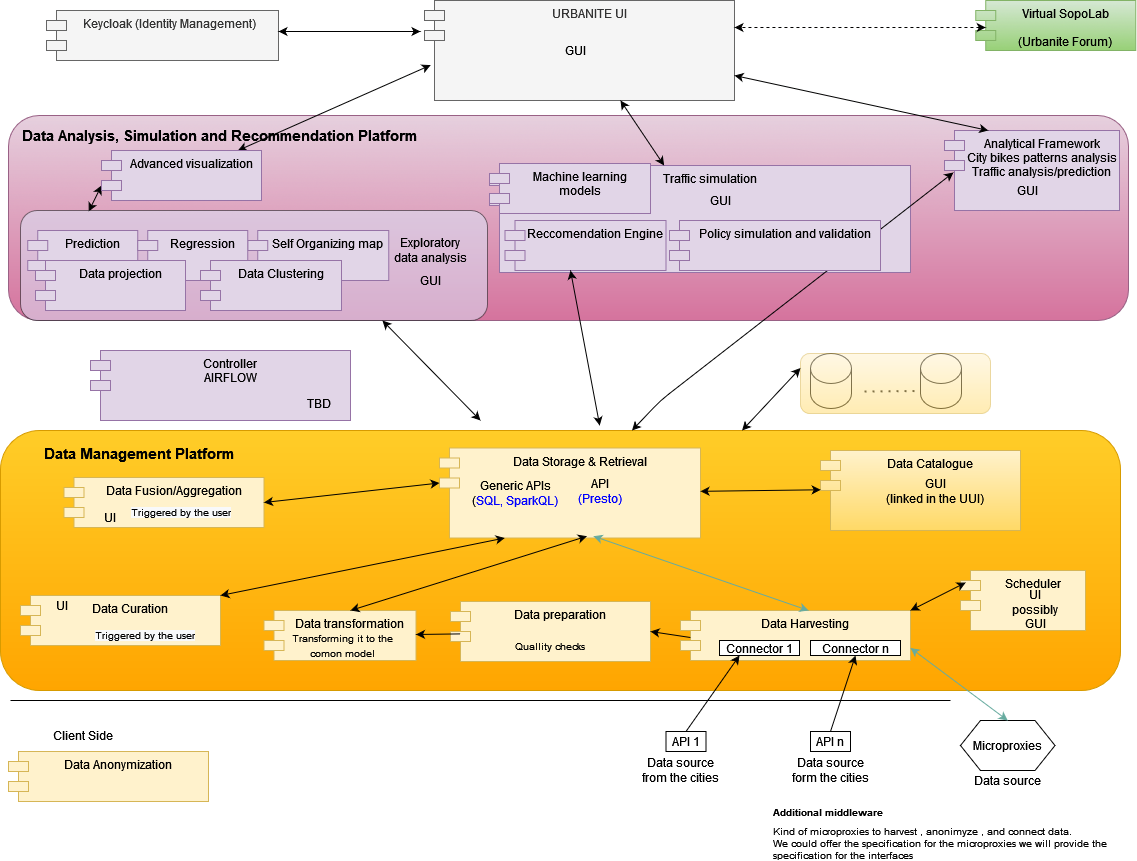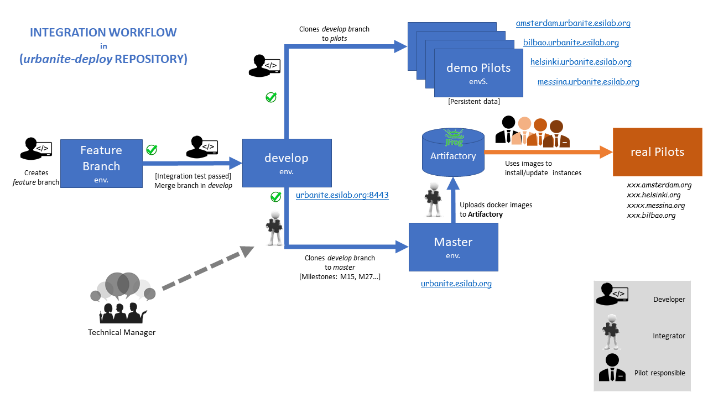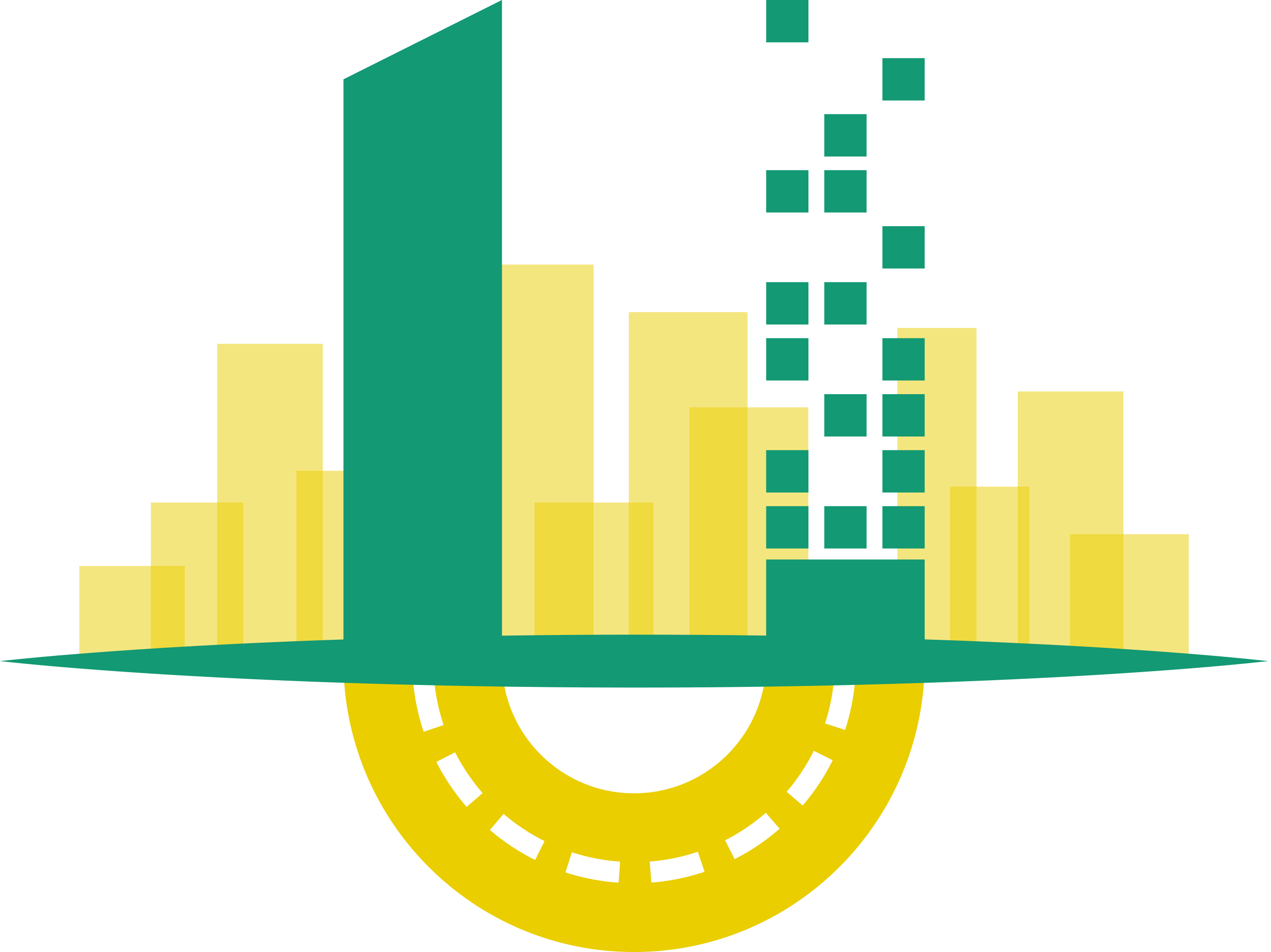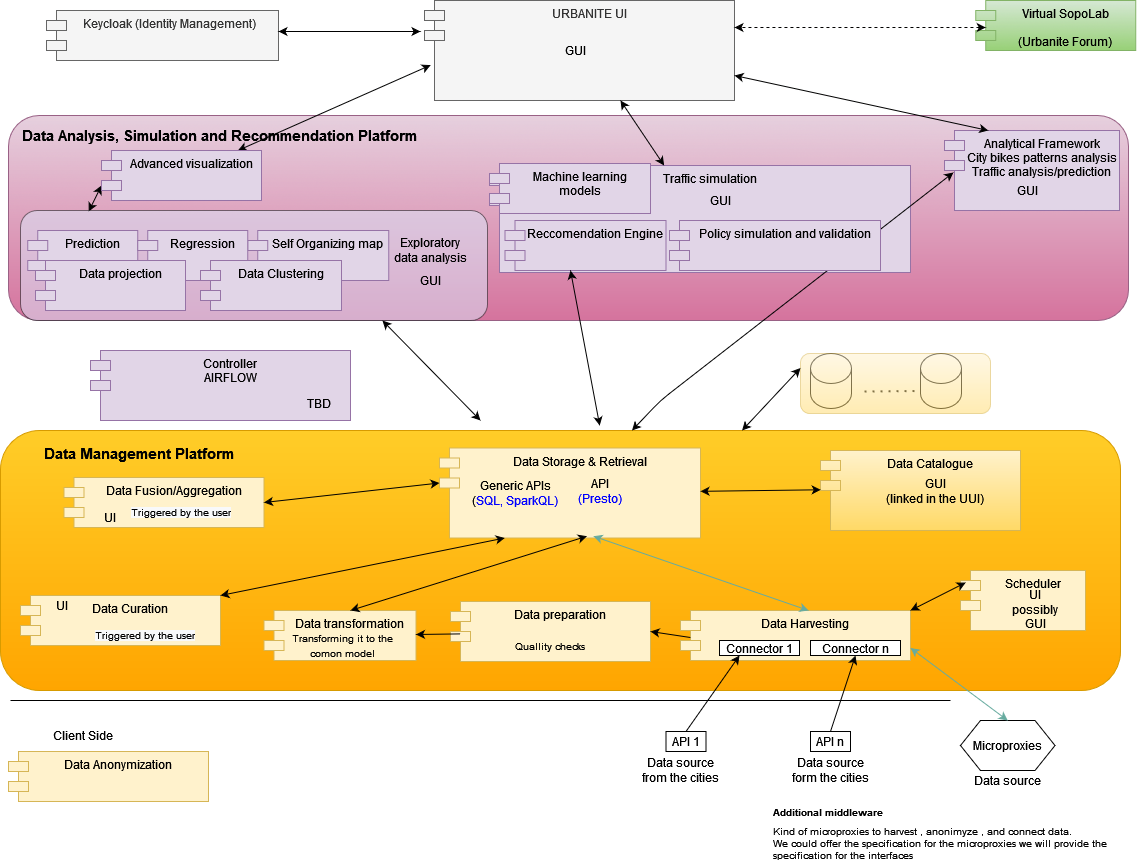The URBANITE integrated architecture
The URBANITE integrated architecture presents a theoretical vision of the URBANITE system covering all the functional and non-functional initial requirements set by the technical work-packages. Different tools, environments and strategies envisioned for the management of the development, integration, and validation stages of the software components to be implemented during the life cycle of the project are described as part of the integration strategy.
The current schema of the Architecture reflects the evolution of the project, it has suffered modifications from the beginning, and it could not be the final design of it.

The process for setting up the URBANITE Ecosystem receives inputs from the rest of technical components, related to the data management and simulation processes, regarding to:
- Technical (software) requirements, expressing both functionality needs and non-functionality aspects.
- Architectural structure and configuration of the components implemented in different work packages.
- Integration of all the components into the overall URBANITE UI.
Also, the Use Cases propose functionalities for the URBANITE ecosystem, that will be considered for being part of the URBANITE ecosystem and prioritize for their implementation.
Three layers of components can be observed and identified by colours:
- Yellow components are those that manage the data, and implemented withing the WP3
- The purple ones are dedicated to the simulation and analysis of the data ingested to the system for the yellow ones.
- And the grey components are those related to the UI, as the entry point to the platform and for user management.
The project adopted a DevOps approach in the development integrating development and operations into a single-minded entity with common goals: high-quality software, faster releases, and improved users’ satisfaction. DevOps also incorporates a number of agile principles, methods, and practices such as continuous delivery, continuous integration, and collaboration.
This DevOps approach is structured in three environments as depicted in the figure.

The main result of the URBANITE project is the URBANITE Ecosystem and aggregates all aspects of the project, namely the citizen participation, both social (citizen participation, attitude and trust in disruptive technologies, co-creation) and technical aspects (data management platform, algorithms and so on).
The URBANITE UI is an integration framework at User Interface level.
The access to the Urbanite UI is provided through the Urbanite’s Identity Manager component (an instance of KeyCloak whose theme is customized following Urbanite’s colour palette).
The Urbanite UI provides Role-Based access to specific functionalities following the IDM returned role(s) of the user

